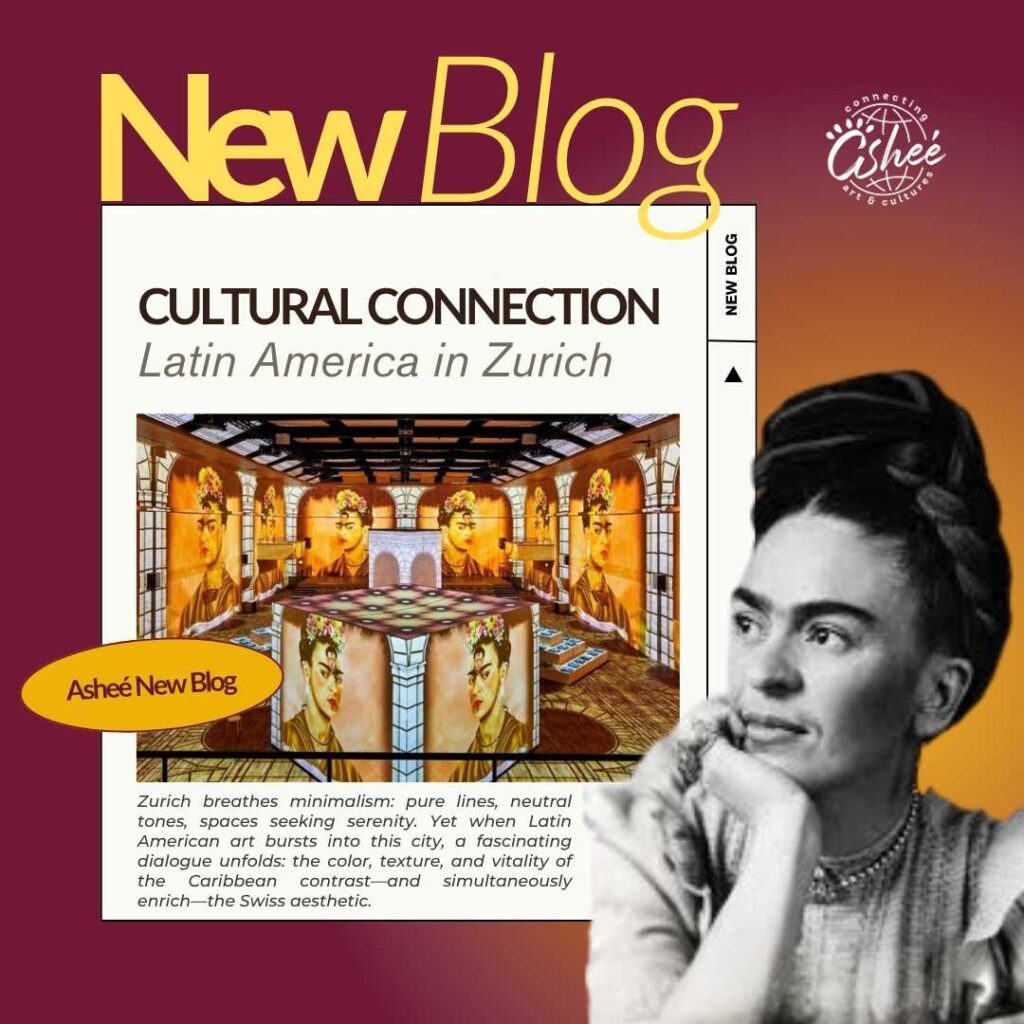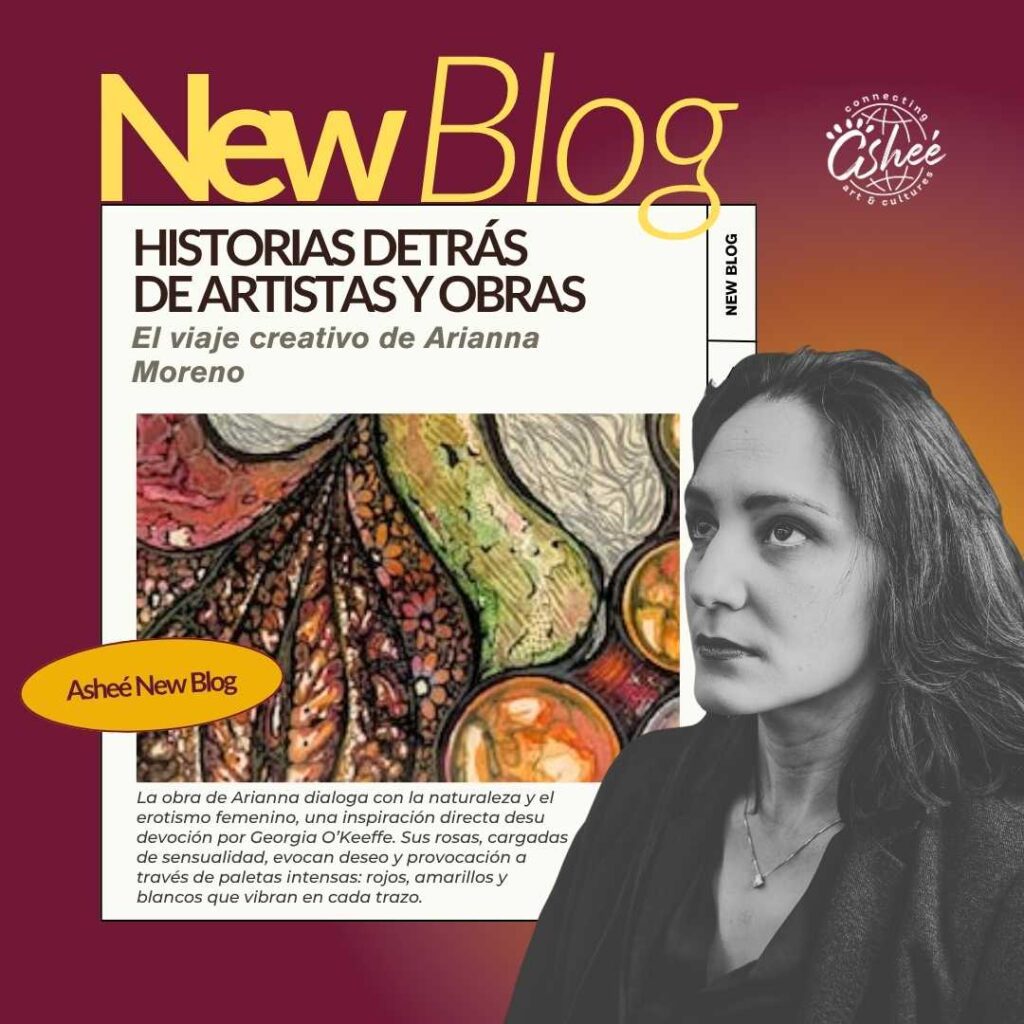Cultural Connection: Latin America in Zurich
Cultural Connection Latin America in Zurich By Estela Ferrer Raveiro Asheé Gallery Zurich breathes minimalism: pure lines, neutral tones, spaces seeking serenity. Yet when Latin American art bursts into this city, a fascinating dialogue unfolds: the color, texture, and vitality of the Caribbean contrast—and simultaneously enrich—the Swiss aesthetic. The European eye faces a stimulating challenge: how does the chromatic intensity of a Caribbean piece coexist with the white, sober order of a Zurich gallery? What seems like opposition becomes complement. Swiss minimalism acts as the perfect canvas for Latin American art to unleash its power, inviting the viewer to step out of calm and into vibration. The Legacy of Frida Kahlo in Contemporary Art A clear example: the echo of Frida Kahlo in young artists. Her exploration of pain, identity, and the body continues to inspire, now reinterpreted through new Latin American lenses. Exhibited in Zurich, these works not only carry Frida’s memory but also highlight the universality of suffering and resilience—now engaging European audiences who find in them an unexpected mirror. Marcia SchvartzMi vida es un tango, 1994Oil on canvas.130 x 115 cm. Magali LaraNaturaleza Muerta, 1986Acrylic on canvas120 x 120 cm. Collector’s Guide: Modern and Contemporary Latin American Art Many collectors in Switzerland still feel uncertain when approaching Latin American art. Onekey is to recognize its stages: Modern: marked by the intersection of tradition and avant-garde, with figures likeWifredo Lam or Torres García. Contemporary: diverse, hybrid, deeply connected to current social and political debates. García. Understanding these nuances allows one to appreciate not only aesthetic beauty but also the cultural and symbolic weight of each piece. Language is also a bridge. Knowing terms like chromatism (Farbigkeit), engraving (Radierung), or installation (Installation) creates an immediate connection between cultures. Speaking about art in both languages is not just practical—it’s a gesture of respect and openness. The richness of Latin American art is not confined to geographic borders. In Zurich, its presence becomes a unique differentiator: a reminder that color, history, and memory can also inhabit the most minimalist spaces.


